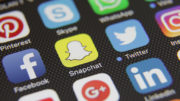Editor’s note: This article is part of a bimonthly series provided by the National Council for Marketing & Public Relations (NCMPR), an affiliated council of the American Association of Community Colleges.
Frustration is good. Frustration works. Frustration empowers, inspires, clarifies and fuels the American spirit of innovation.
Why frustration?
Simply put, frustration solves problems. You don’t solve problems by being comfortable. Stop looking to be more comfortable in your work. Comfortability is bad. Overvalued. Ineffective. Irresponsible. Comfort is the enemy of frustration.
Get frustrated.
In “Glengarry Glen Ross,” Alec Baldwin’s character implored his fellow salesmen to get frustrated and let their frustration drive increased sales: “You don’t like it, leave. I can go out there tonight with the materials you got, make myself $15,000. Tonight! In two hours! Can you? Can you? Go and do likewise! Get mad!”
Bottom line: You know what it takes to solve problems? Frustration.
In higher education, a problem may be lack of institutional awareness, ongoing crime, decreasing student enrollment or poor student persistence. Whatever the problem, frustration, in all its wonderful forms, is the start of the solution. Frustration leads to innovation. Innovation leads to evolution or even revolution.
Focus gets clearer the bigger the frustration. Thinking gets more intense. Deeper. Wider. Broader. Clearer.
Aha moments
Frustration leads to aha moments.
At Michigan’s Oakland Community College (OCC), two recent examples of frustration leading to aha moments come to mind:
- Local higher education institutions competing, not partnering with each other.
- Digital billboard technology not being used as originally intended.
Let’s take the first example.
I spent most of my career in the marketing departments at four major southeastern Michigan universities, competing against the region’s best and brightest university marketing minds. In April 2018, I joined OCC as vice chancellor for marketing and communications. As I prepared to start at a local community college, I knew I would no longer be directly competing with university marketing friends, or “frenemies,” for prospective students. That frustration had long boiled over.
Now, they will be coming to me to look for students to transfer. Now, they will be working closely with me, not against me, to recruit students. No more competition.
But would they?
Slogan blues
Before I started at OCC, my first call was to schedule a breakfast meeting with John Young, vice president of communications and marketing at Oakland University (OU). I’ve known John for a long time and it was more than time to catch up. On my way to breakfast, I was shaking my head in frustration at where John got all of the money to invest in OU vinyl and digital billboards along the major freeways and why there were no OCC billboards anywhere to be found. OU did not have that type of marketing investment when I worked there years ago.
The more I drove, the more I got frustrated.
I noticed the OU slogan “Make It Here” appearing on the billboards over and over. Why not OCC, I thought. As I begin to think deeper about the problem, I got mad. Why not OCC?
Then came the aha moment: If prospective students are being encouraged to “Make It Here,” let’s encourage them to “Start Here” at OCC and “Make It Here” at OU with the OCC and OU logos underneath the words, respectively, on digital billboards throughout Oakland County. John loved the idea. He later changed it to “Start Here. Finish Here.”
Aha.
Innovation at its finest.
What we did not know is Michigan’s first higher education cobranded billboard campaign would begin conversations. Many talked about it. Some copied it. Crain’s Detroit Business wrote a story about it. Conversations continue today about how a local university and a local community college are working together to solve a problem that started with frustration.
Evolution or revolution?
Turning to tweets
Let’s take the second example.
As we began planning our next digital billboard campaign at OCC, I became increasingly frustrated knowing how most, if not all, digital billboards were being treated as if they were vinyl billboards with static messages. Why not take better advantage of the technology especially since there is no extra cost to switch out messages on a daily basis, even during a single day? I asked the outdoor companies if there was any organizations nationally using the digital billboard technology more effectively. No immediate response.
So I got mad.
Aha.

Oakland Community College is currently running a “tweet-a-day” campaign on eight local digital billboards through March 24. (Image: OCC)
Enter the “Tweet a Day” digital billboard campaign.
The campaign started January 24, 2019. It features live and planned OCC tweets daily as well as tweets by selected partner organizations at no cost to them on eight digital billboards in high-visible locations throughout Oakland County. We only asked partners to tweet what goes live on the digital billboards and include both organizations in the tweet.
What we did not know is Michigan’s first Twitter-inspired and partner-fueled digital billboard campaign would begin conversations. Many talked about it. Some may copy it. Crain’s Detroit Business wrote a story about it. Conversations continue today about how a local community college is better using digital billboard technology, strengthening its partnerships all while improving its social media footprint to solve a problem that started with frustration.
Evolution or revolution?
Let your frustration decide.





